
B.C. has a new policy for staking mining claims. Why doesn’t anyone like it?
B.C. previously allowed mineral claims without First Nations consultation. It was court-ordered to fulfill its...
Surrounded on three sides by oilsands operations, the Fort McKay First Nation has benefited tremendously from industrial development — while also experiencing firsthand its environmental consequences.
While the nation has historically supported nearby operations, when Prosper Petroleum proposed a 10,000 barrel per day oilsands project near Moose Lake, an area of sacred cultural value for the people of Fort McKay, the community reached a tipping point.
The nation filed a lawsuit against the province of Alberta on December 3, after years of effort to prevent the proposal from going forward failed to protect the treasured region and the Fort McKay way of life.
The lawsuit contends that, because of significant forestry, mining, oil and gas development and road building, Fort McKay’s ability to practice treaty rights — to hunt, fish, trap and gather medicinal plants — relies almost exclusively on their continued access to the relatively intact landscape surrounding Moose Lake.
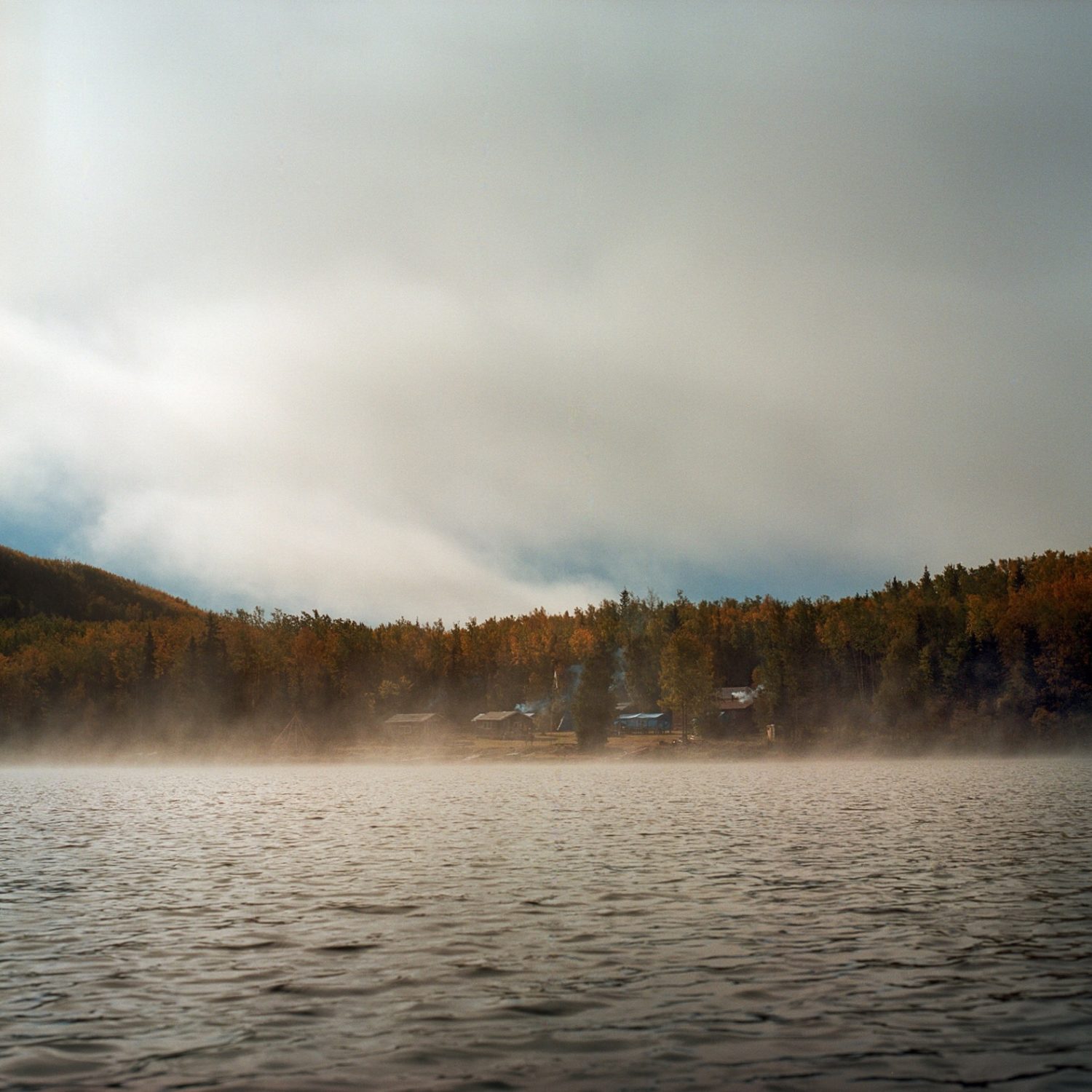
The community camp at Moose Lake reserve, 60 kilometres west of Fort McKay First Nation. Moose Lake is a lifeline to the traditional culture of the people of Fort McKay. It’s a last refuge, still seemingly far from the impacts of industry. The recently approved Prosper Petroleum oilsands project would come within two kilometres of the reserve. Photo: Aaron Vincent Elkaim / The Narwhal
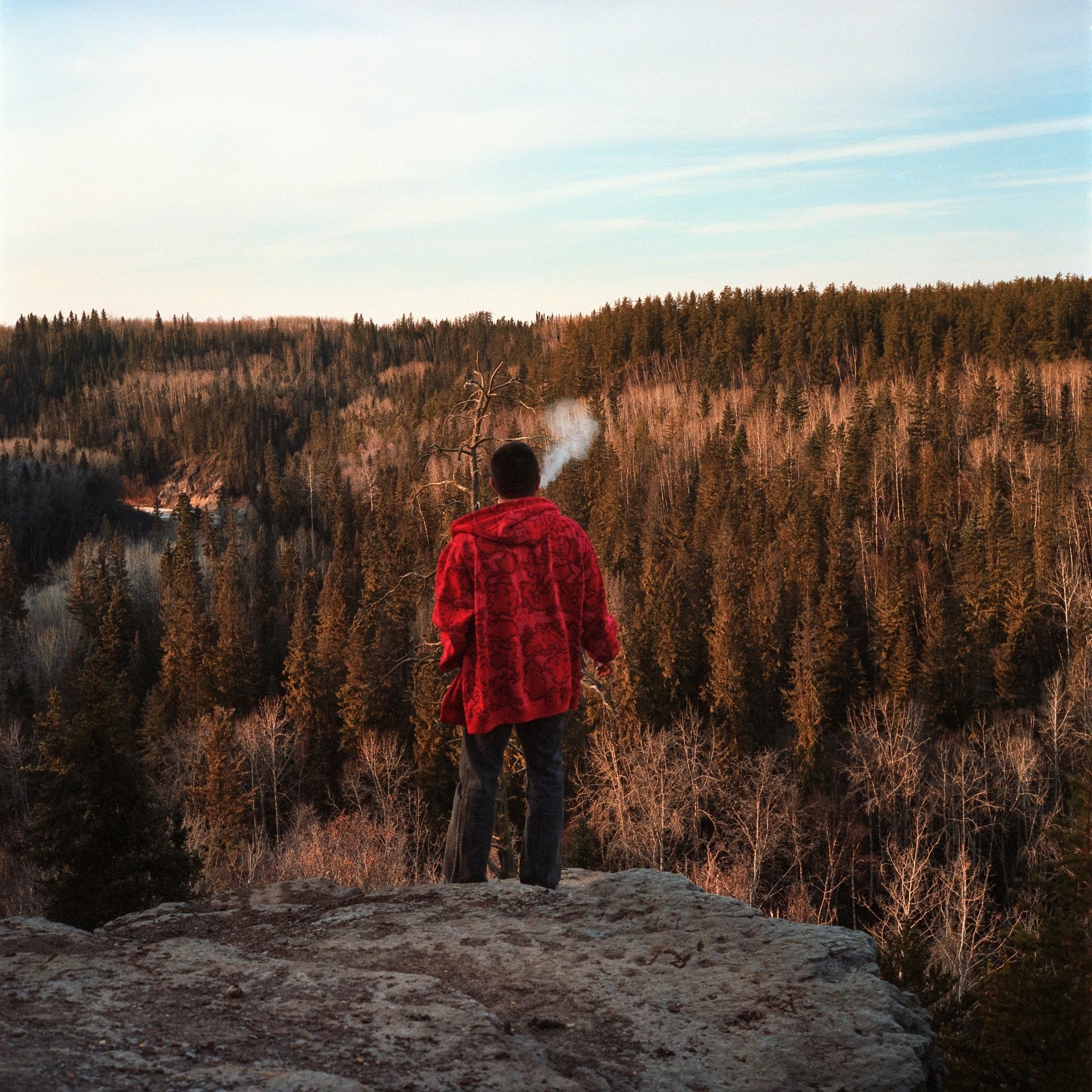
Mark L’Hommecourt smokes a cigarette on the Target Road lookout, his favourite place to connect to nature on the Fort McKay reserve. L’Hommecourt speaks passionately against the destruction of his land by industry, but often finds himself forced to work with those same companies due to a lack of other opportunities in the region. Photo: Aaron Vincent Elkaim / The Narwhal
In 1899, the Fort McKay First Nation became a signatory of Treaty 8, an agreement that promised to preserve the nation’s traditional ways of life “as long the sun shines, the river flows and the grass grows.”
As recently as the 1960s the reserve of Fort McKay had no running water. The people, housed in humble shacks, relied for sustenance on the landscape of Alberta’s northern boreal forest and the Athabasca River — the thread that connected the remote community to the rest of Canada.
This way of life, the Fort McKay say, sustained them for thousands of years.
But as one elder Zackary Powder puts it, “It’s not like it used to be. Everything has changed.”
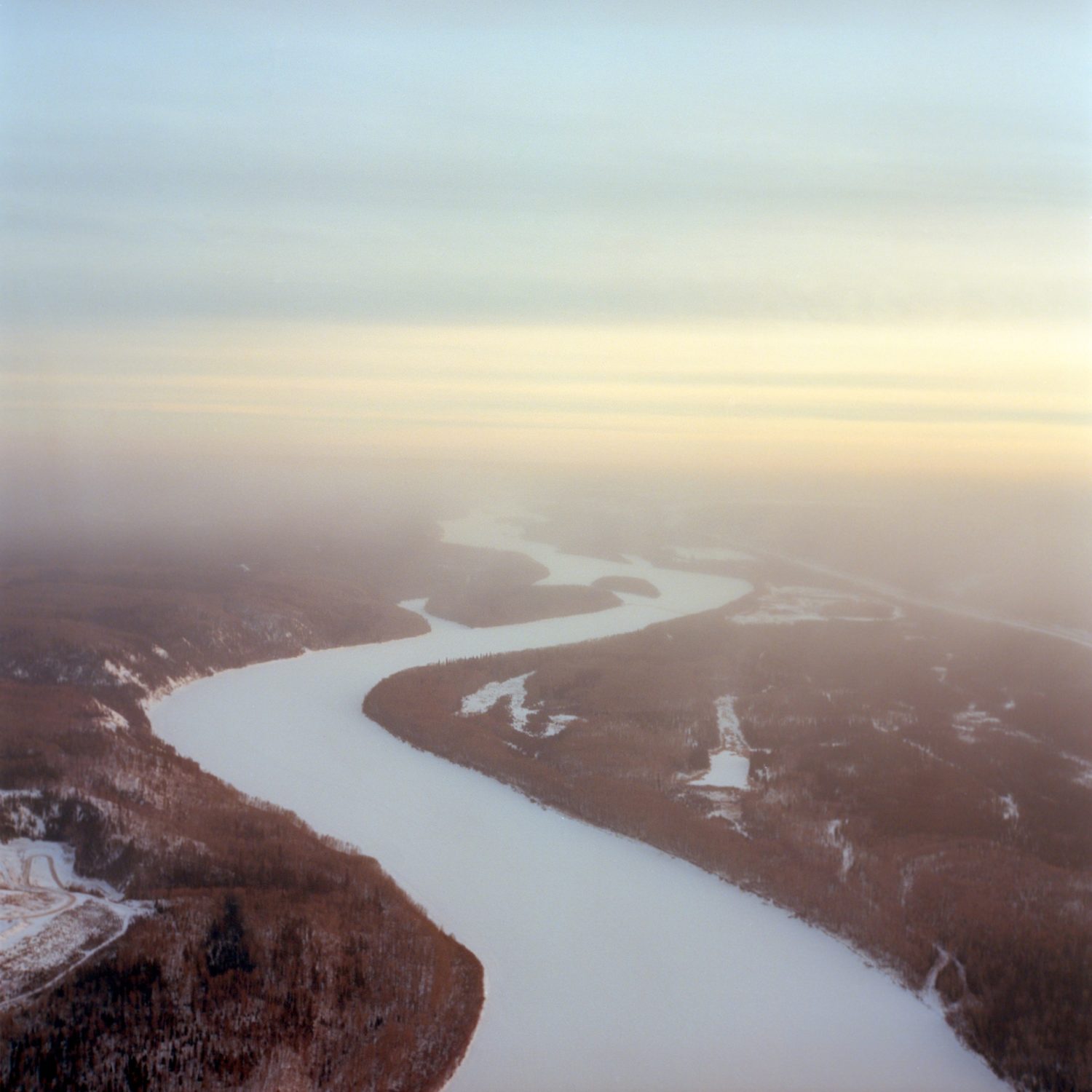
Smog is seen over the Athabasca River, a place where archeological remains of First Nations people date back over 3,000 years. The river is now lined with industrial sites and is heavily polluted. Locals are warned not to eat the fish which are often found with deformities and tumours. The river feeds into the Athabasca Delta, the third largest freshwater delta in the world, on the edge of Wood Buffalo National Park. Photo: Aaron Vincent Elkaim / The Narwhal
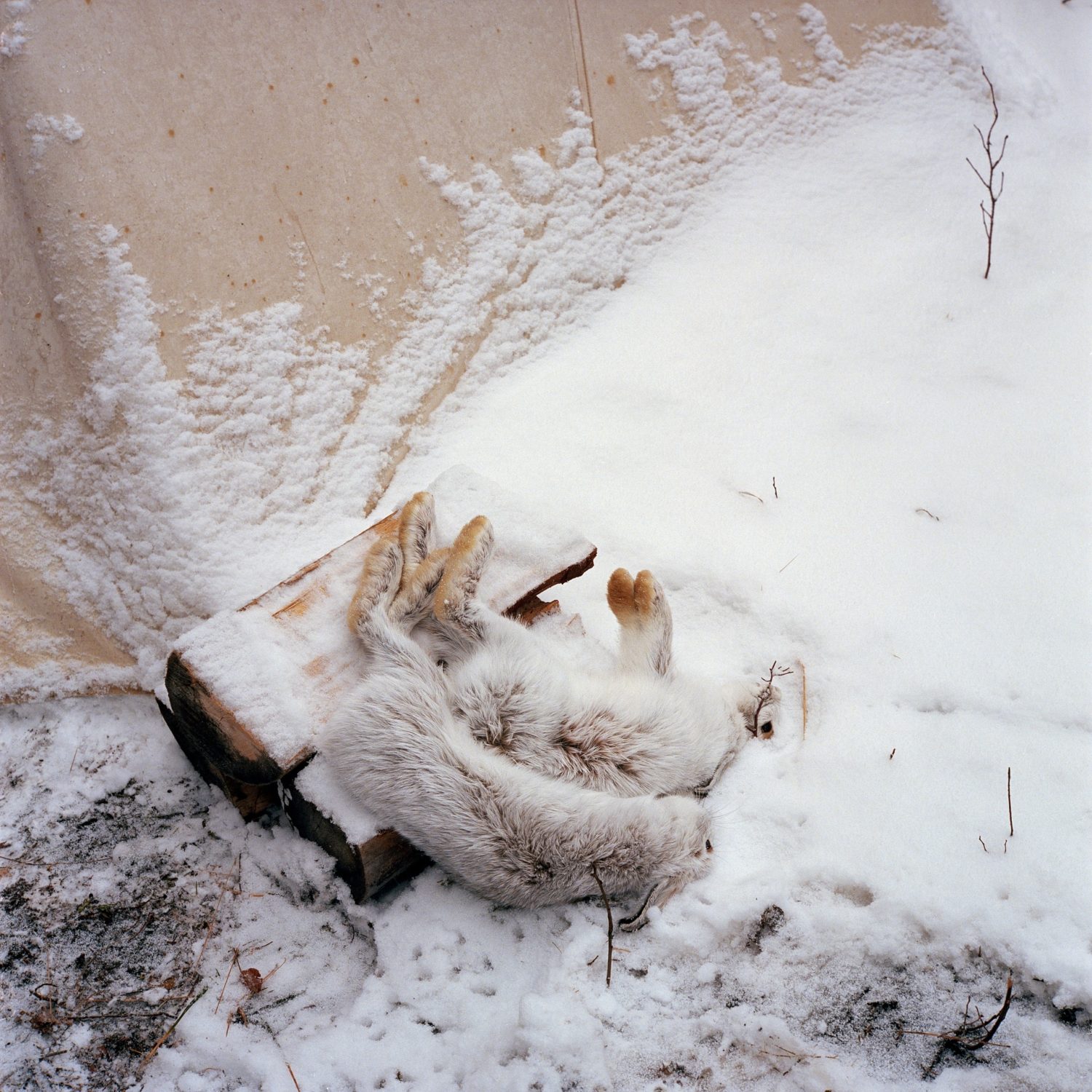
Snared rabbits on the L’Hommecourt trapline. Traditional hunting practices are becoming more difficult for the First Nations people of Fort McKay with less accessible land and questions about contamination of the meat. One of these rabbits was discarded due to an unhealthy looking liver. Photo: Aaron Vincent Elkaim / The Narwhal
Today Fort McKay are a nation of about 800 people, situated 65 kilometres north of Fort McMurray, the heart of the Alberta oilsands, one of the largest oil deposits on the planet.
Over time, Fort McKay has witnessed the incredible transformation of the boreal, from a sustainable resource for their traditional livelihood into “overburden” stripped to make way for open-pit mines, tailings ponds and processing plants.
Over the last two decades, vast swaths of Fort McKay traditional territory have been leased to some of the world’s largest energy corporations.
What has brought significant environmental impact has also offered impressive economic returns, rarely afforded to First Nations on reserves.
Today, Fort McKay’s unemployment is near zero; the average household income is $73,500 a year; they have new roads and housing and own the Fort McKay Group of Companies that generates $200 million annually providing services to industry.
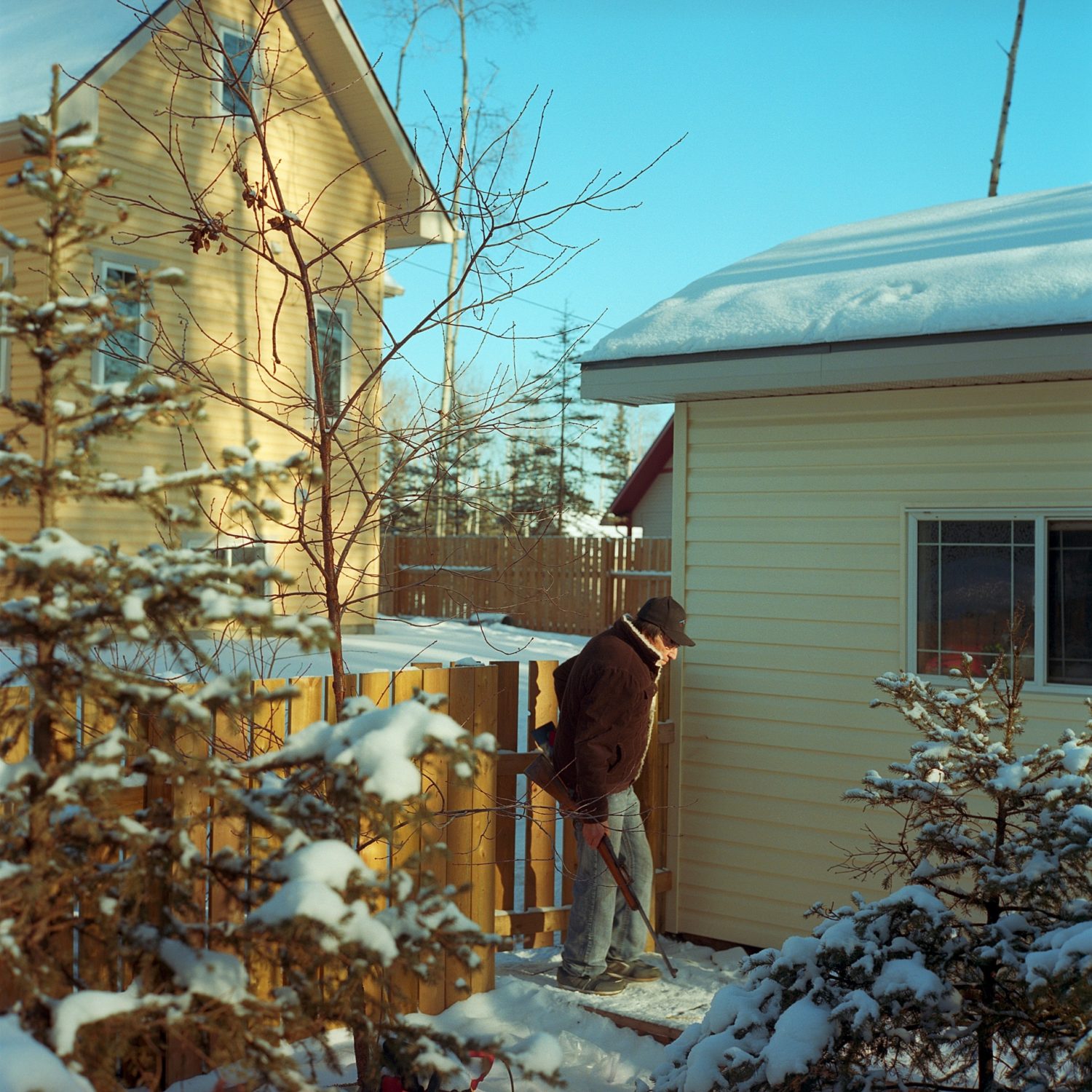
Elder Wilfred Grandjambe is seen at his home in Fort McKay First Nation. As a hunter who grew up on the land, Grandjambe is very aware of the negative impacts the oilsands have had on the environment, animals and his culture. Yet with industry as the only employer in the area he understands the catch-22 his community is facing and has himself worked for both Syncrude and Suncor, two of the largest oilsands operators. Grandjambe says he enjoys the comforts they have afforded him. Photo: Aaron Vincent Elkaim / The Narwhal
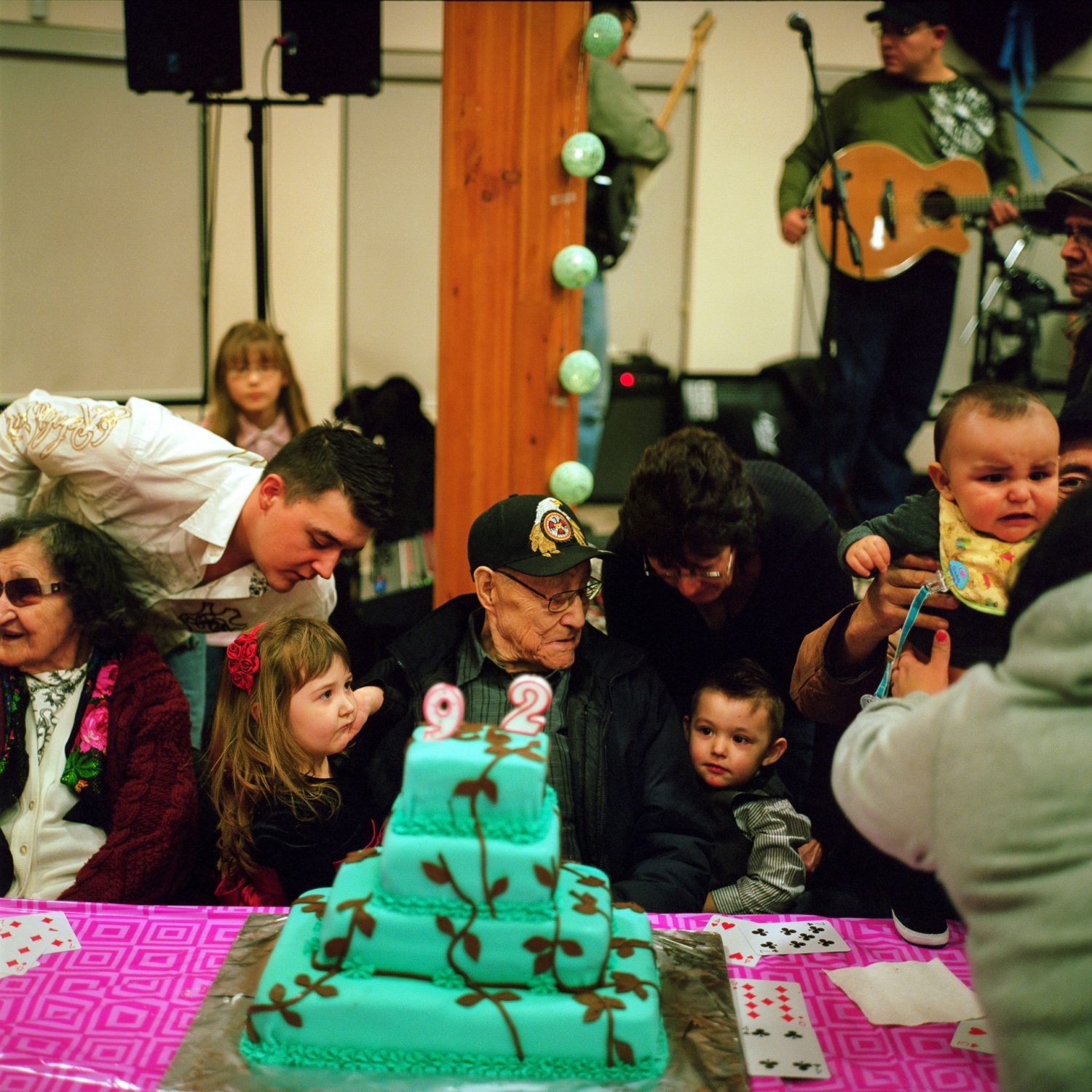
James Grandjambe celebrates his 92nd birthday with his sister Flora Grandjambe, left, and Chief Jim Bouchier, right, at the Fort McKay Band Hall in February, 2012. Photo: Aaron Vincent Elkaim / The Narwhal
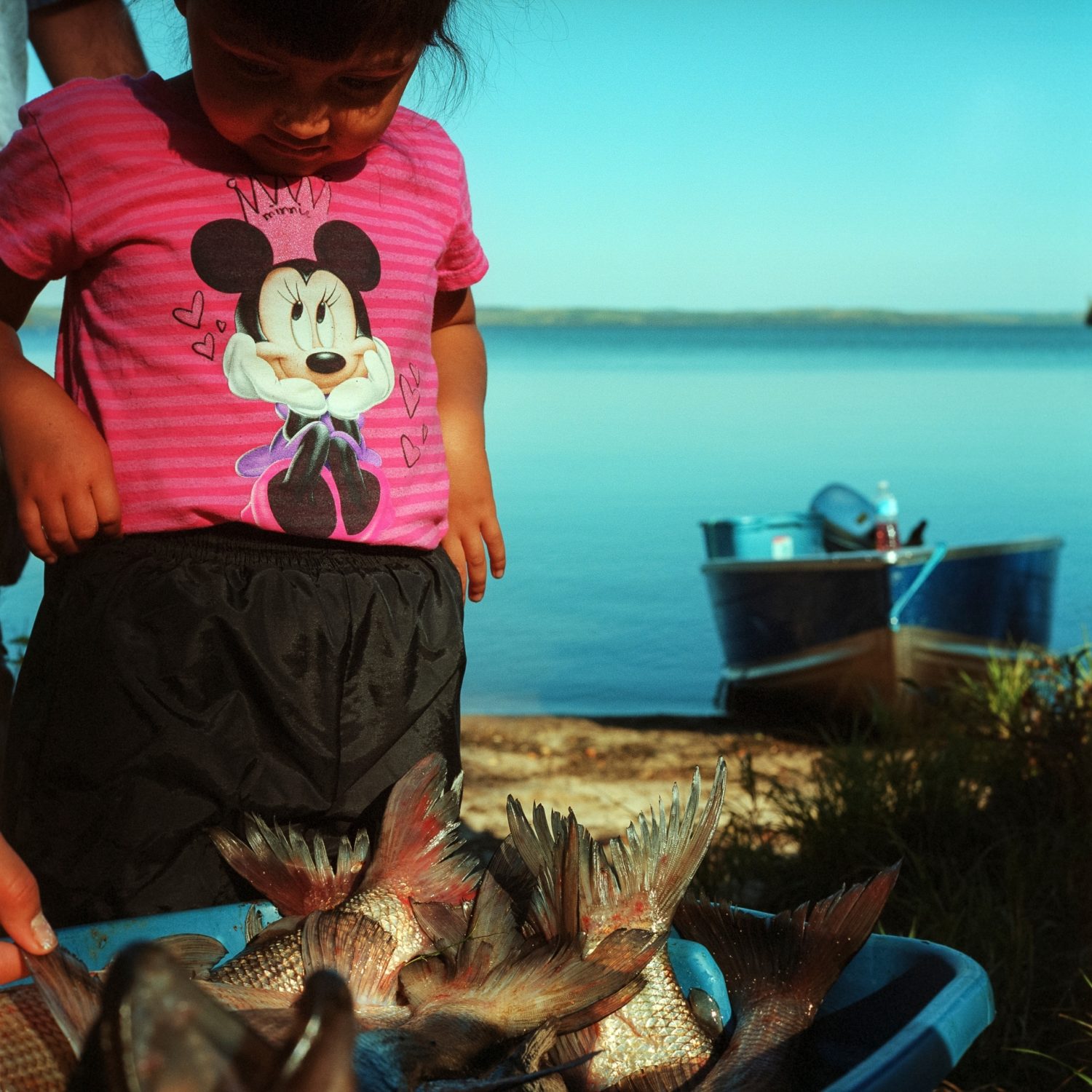
September 2013 – Joely Grandjambe looks at a catch of White Fish and Pickerel that were netted by her grandfather Joe Grandjambe at Moose Lake Reserve. Photo: Aaron Vincent Elkaim / The Narwhal
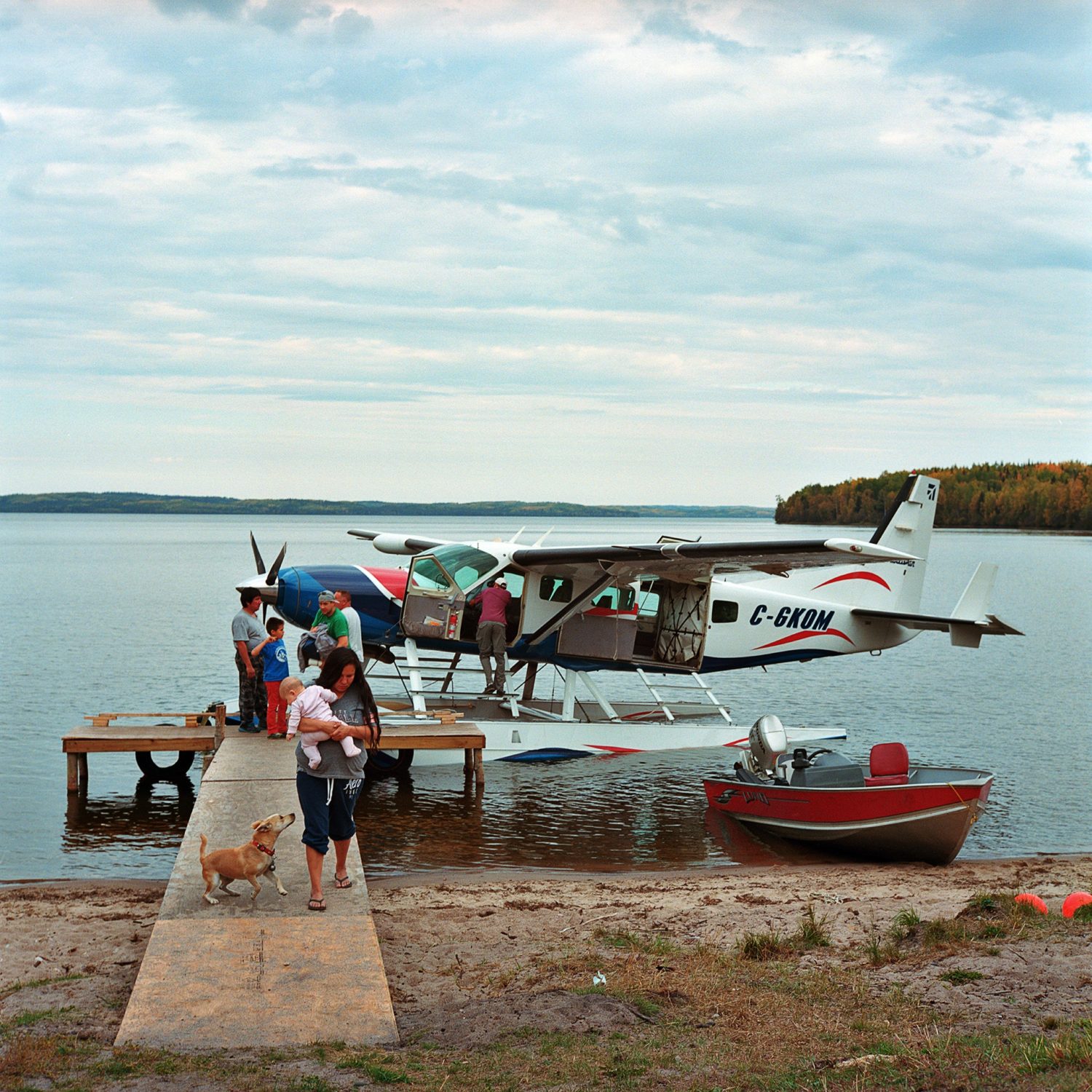
September 2013 – Maureen Grandjambe arrives with her family to the Moose Lake Reserve on a plane chartered by Suncor Energy, which provide free flights to members of the community. 60 kilometres from Fort McKay, Moose Lake is the only pristine land remaining for the community to practice its traditional culture. Photo: Aaron Vincent Elkaim / The Narwhal
Chief Jim Bouchier, first elected in 1986, has held office in the community for 27 of the interim years. He is chairman of the board for the Fort McKay Group of Companies.
“Jim believes the practice and preservation of the Fort McKay First Nation’s traditional ways of life can occur simultaneously alongside continuous and long-term sustainable oil sands development,” Fort McKay’s website states.
It is now in Bouchier’s name that a lawsuit has been filed against Alberta on behalf of the broader Fort McKay community.
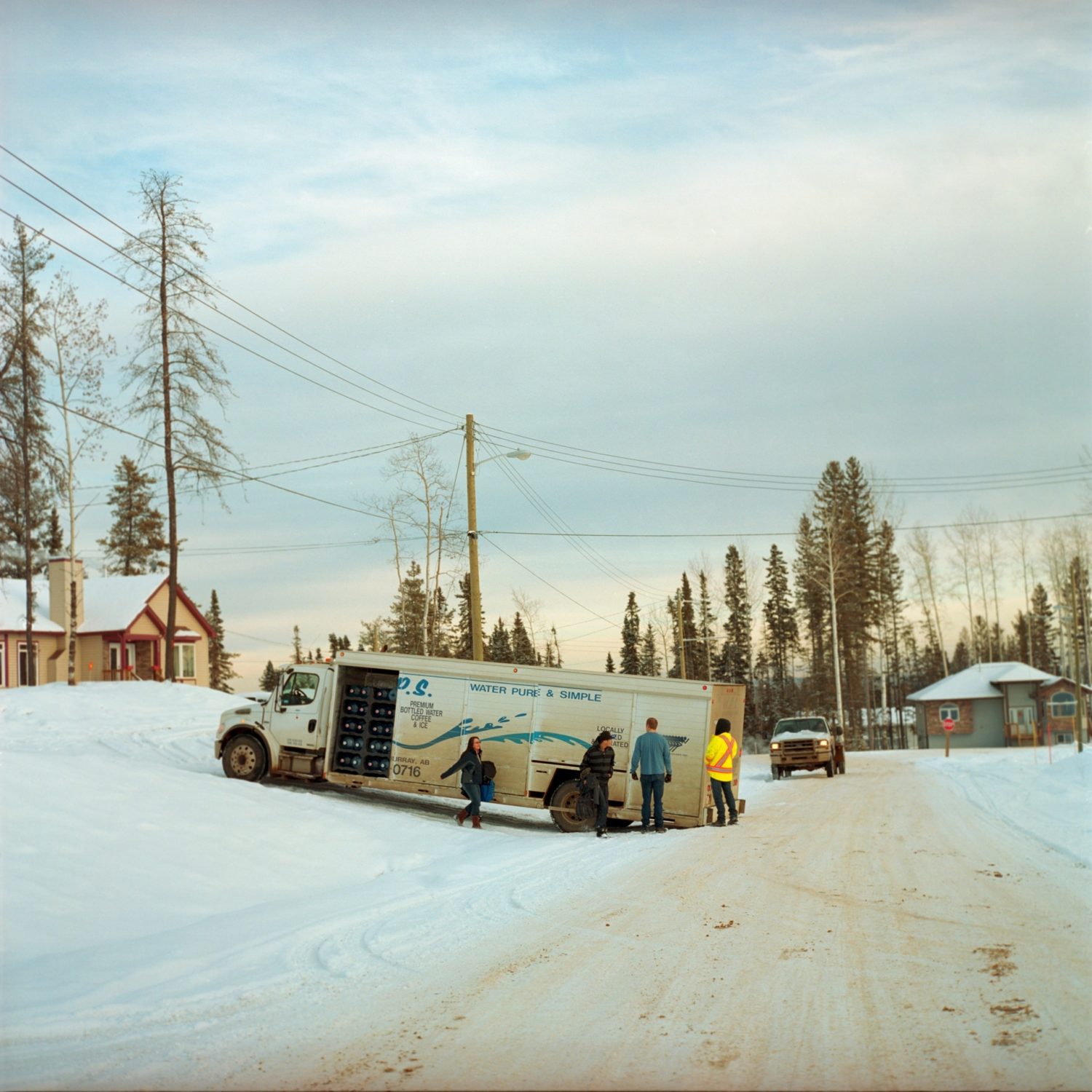
A water truck gets stuck in a driveway in Fort McKay. Since November 2011, water has been delivered to each and every home in Fort McKay after the community realized they had been drinking water with high levels of the carcinogenic chemicals, trihalomethanes and haloacetic acids. Many people complain of rashes and sores from showering in the water. Photo: Aaron Vincent Elkaim / The Narwhal

Crystal and Oren Boucher celebrate their marriage in the Fort McKay First Nation Band Hall. Oren, a long-time employee of Suncor, had terminal colon cancer at the time of his wedding. He passed away one year later on the night of his grandfather — and oldest community elder — James Grandjambe’s 92nd birthday party. Cancer, miscarriage and respiratory illnesses are frequently reported in Fort McKay. Many believe industry is to blame. Photo: Aaron Vincent Elkaim / The Narwhal
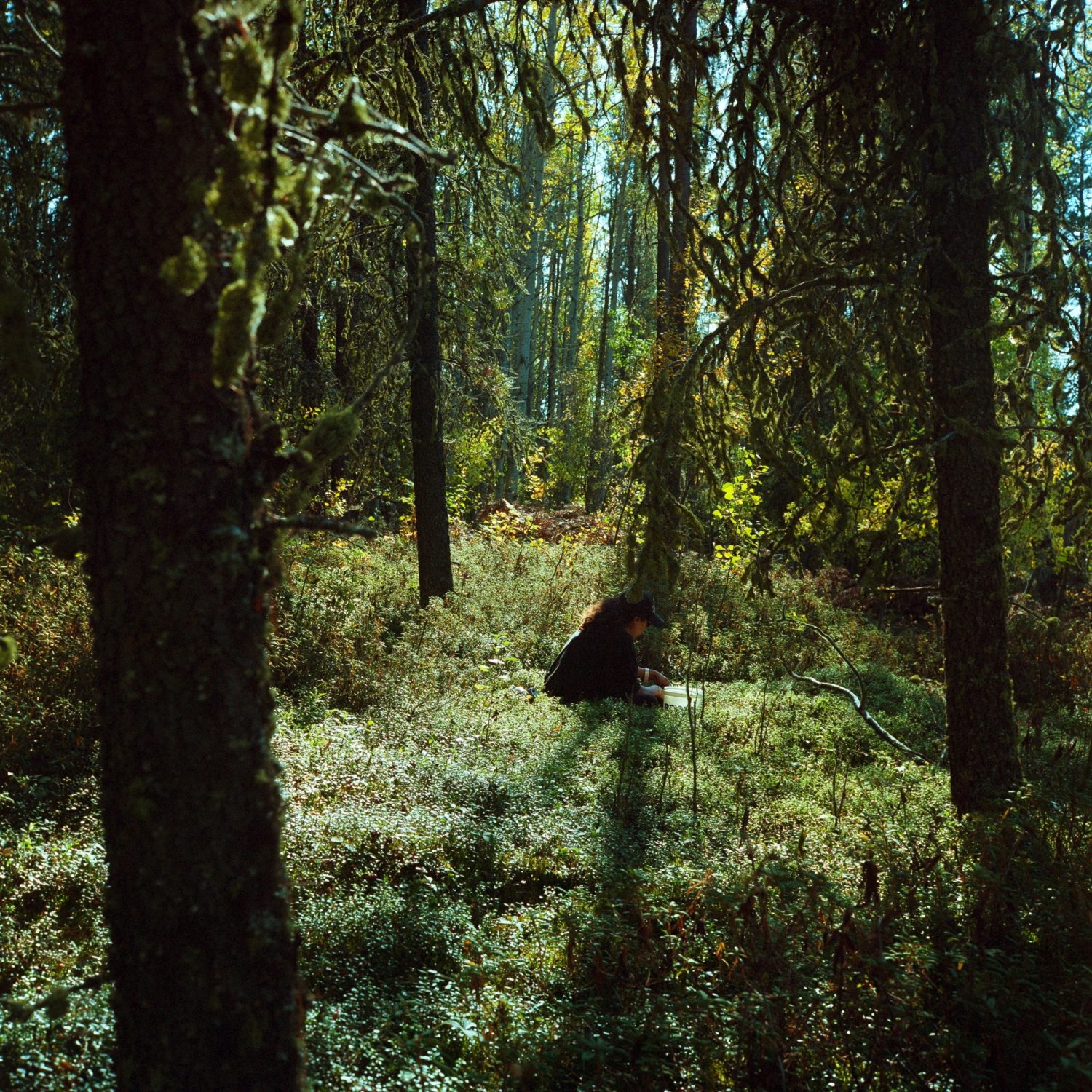
Delores Lacord harvests cranberries on the Moose Lake reserve. Each summer, Suncor Energy provides free flights to members of the community to visit their historic hunting grounds to practice their traditional ways. Photo: Aaron Vincent Elkaim / The Narwhal
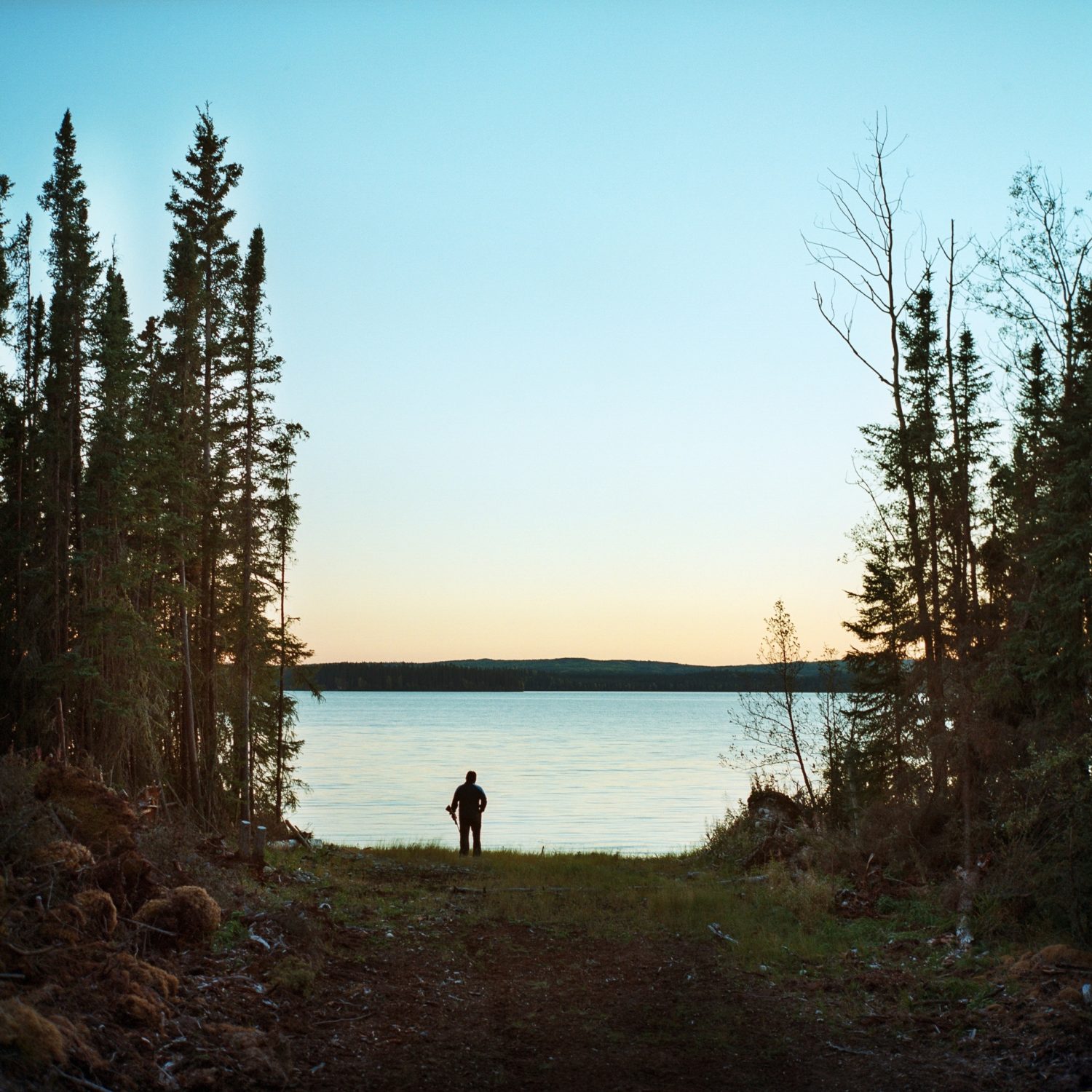
Garnet Ahyasou stands by Buffalo lake, also known as Namur Lake, while hunting grouse on Fort McKay’s Moose Lake reserve. Photo: Aaron Vincent Elkaim / The Narwhal
Prosper Petroleum’s $440 million Rigel oilsands project would come within two kilometers of the Moose Lake reserve, a remote ancestral territory of unspoiled land with two lakes, Gardiner and Namur, known to the community as Moose Lake and Buffalo Lake.
The community views this land as all that remains of their rights to the wilderness — a lifeline to their culture. Many Fort McKay residents still practice their traditional ways of life here: hunting, fishing, trapping, collecting wild plants and cultivating spiritual practices.
It’s where families take their vacations, where grandfathers pass traditional knowledge to their grandchildren and where people who spent their lives working for oilsands companies build their retirement homes.
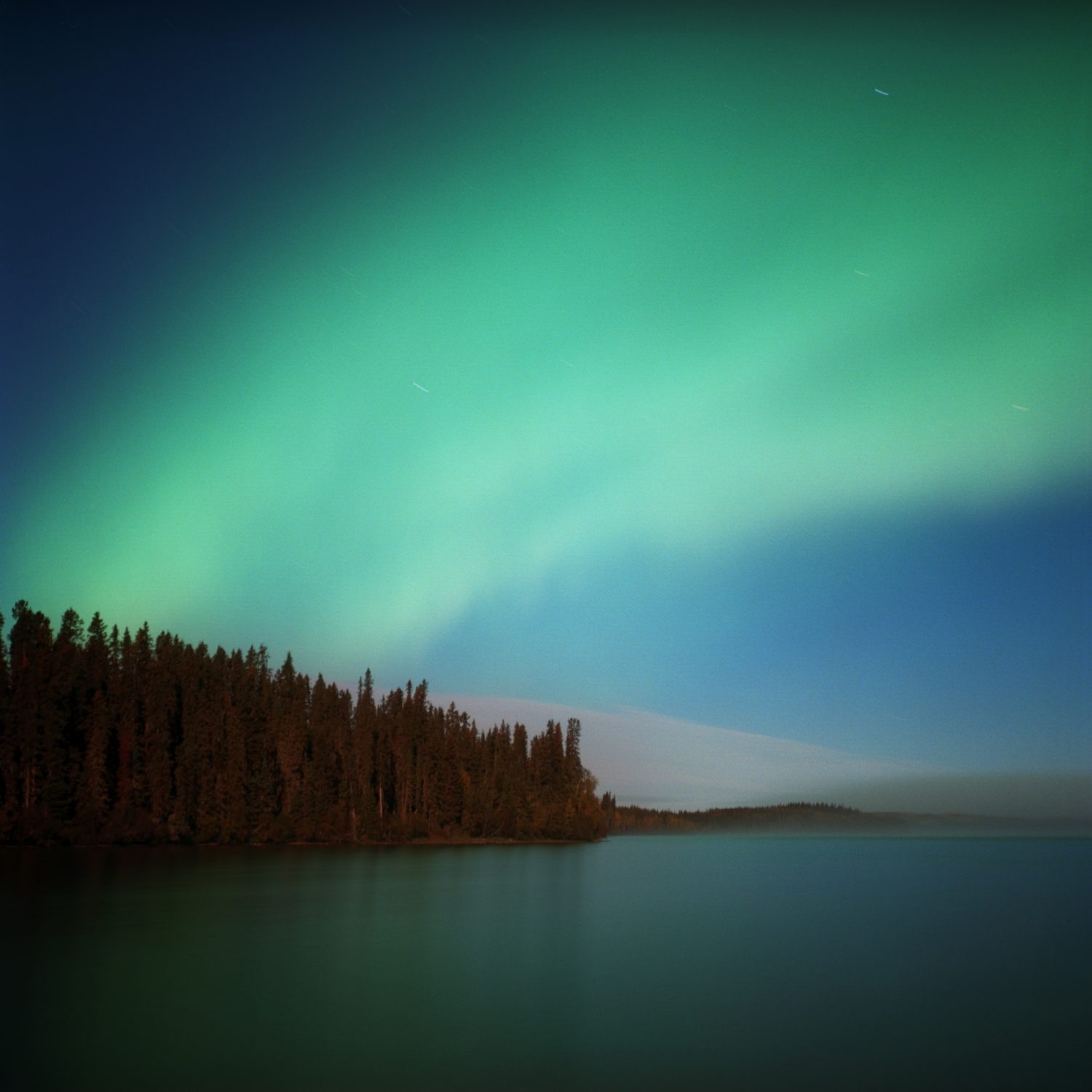
The Northern Lights dance over the water at Moose Lake. The area is the only undeveloped land remaining for the community to engage in traditional cultural and spiritual practices and escape into the wilderness. Photo: Aaron Vincent Elkaim / The Narwhal
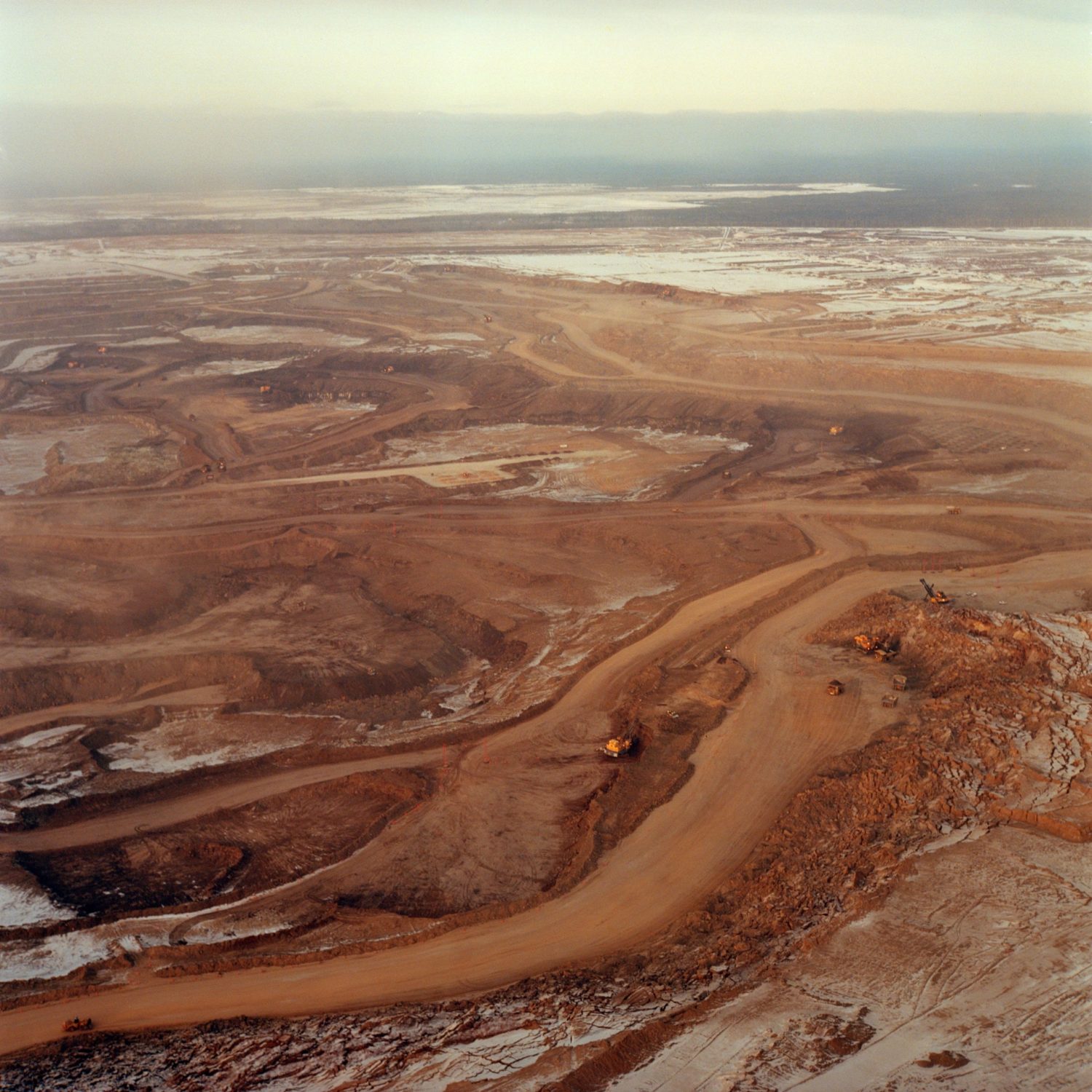
A strip mine operated by Suncor, one of the largest operators in the Alberta oilsands. This land was once boreal Forest and, under current regulations, every square-kilometre must be returned to near original condition and productive state after mining is complete, a feat that has yet to be proven possible. Photo: Aaron Vincent Elkaim / The Narwhal
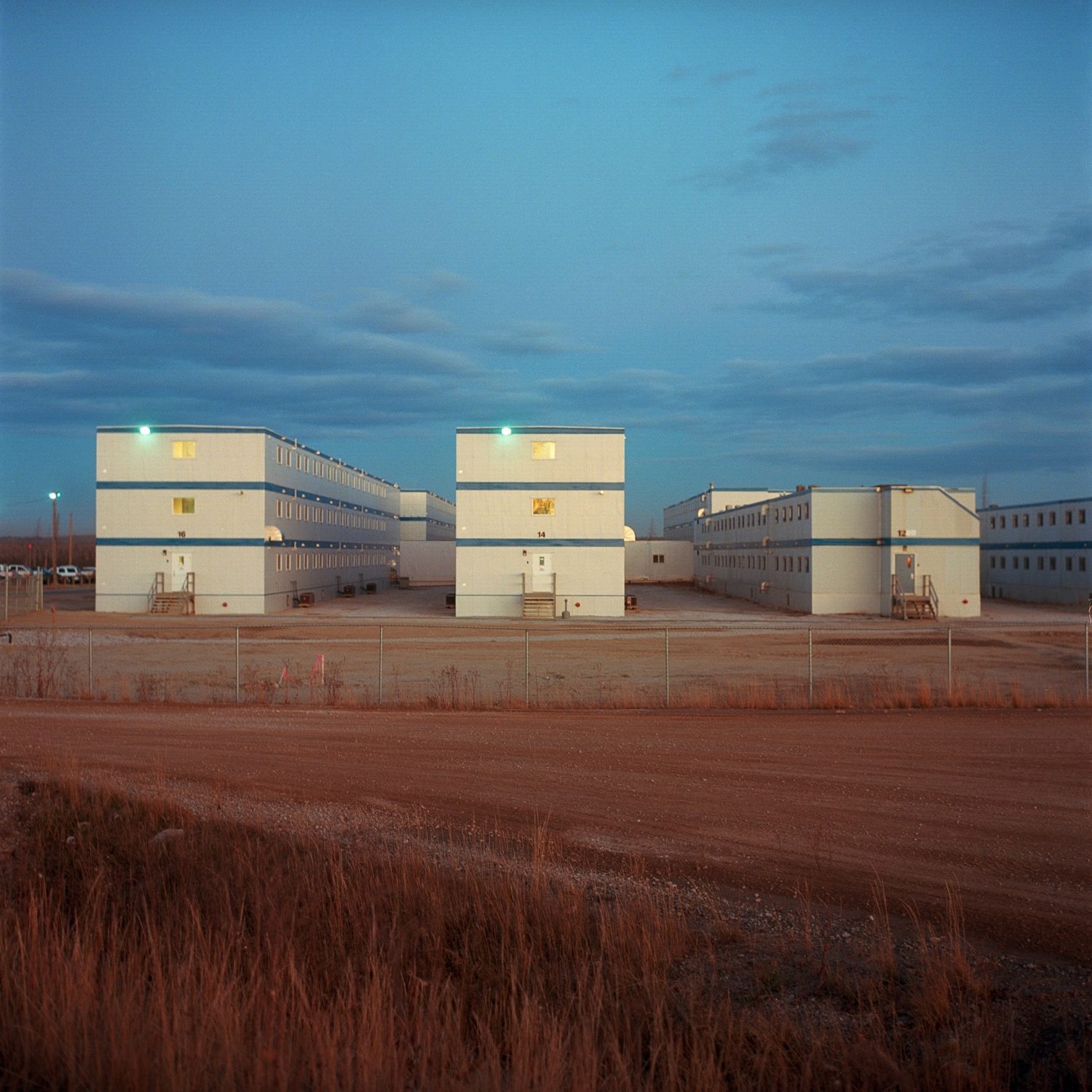
The PTI Wapasu Camp, one of many camps to house workers from nearby oilsands projects, is located five minutes from Fort McKay First Nation. The Fort McKay Group of Companies provides custodial and food services for many of the camps. Photo: Aaron Vincent Elkaim / The Narwhal
Suncor Energy, one of the largest producers in the Alberta oilsands, supports a land-access program which flies band members out to a permanent camp at Moose Lake during the spring and fall hunting seasons.
While Fort McKay has largely worked in partnership with the oilsands industry, they have been fighting to protect Moose Lake for nearly 20 years.
“Fort McKay is fighting for its cultural survival, as one of the largest industrial projects on the planet devours more of our land that has been our home for millennia…We will not stand idly by and let the area be destroyed,” Chief Boucher said in a statement.
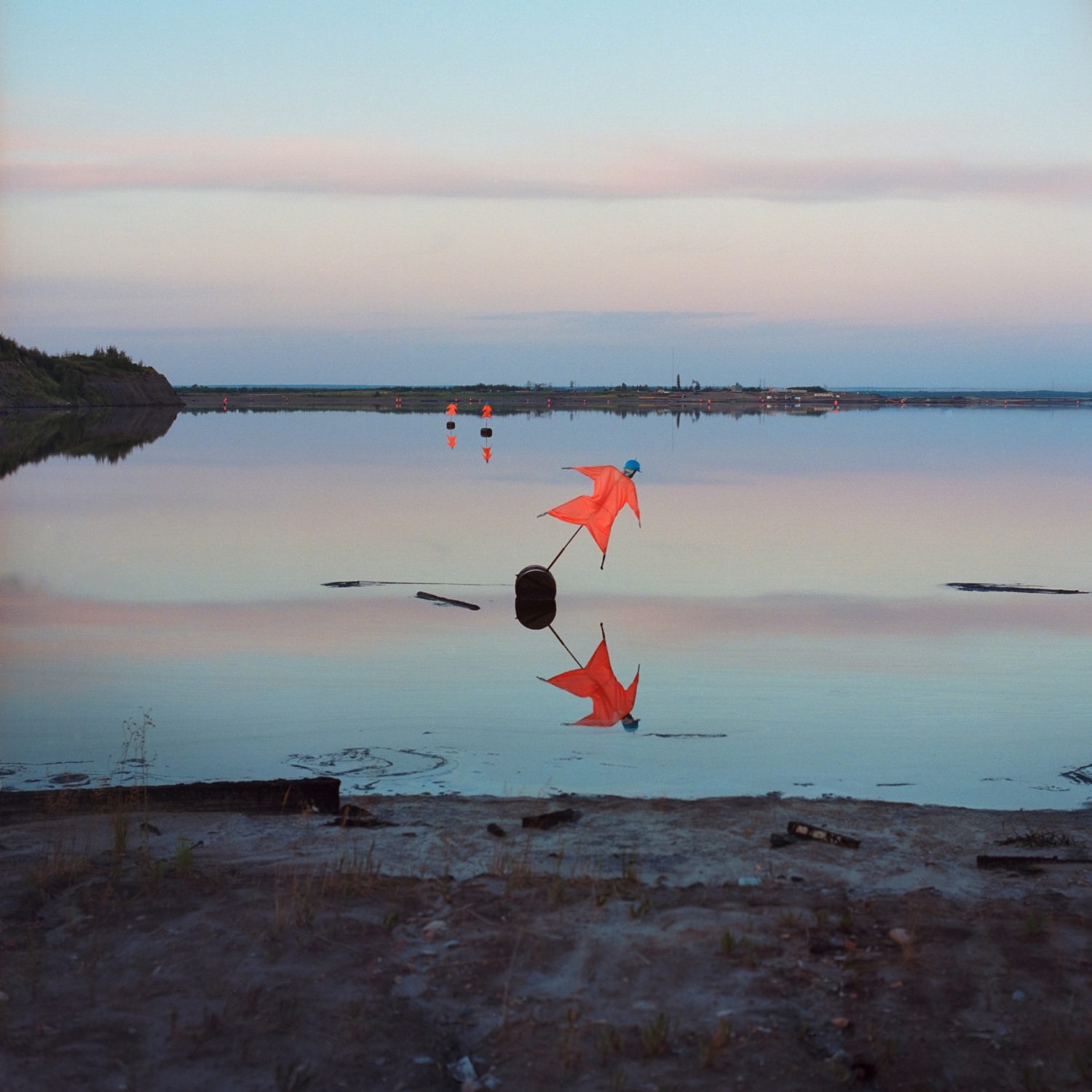
Scarecrows, nicknamed “bitumen,” are used to prevent migratory birds from landing on this tailings pond owned by Suncor. Operations in Alberta’s oilsands used 198 million cubic metres of water in 2016. Water used in in-situ mining operations is not recovered. Waste water from open-pit mining operations and the processing of bitumen ends up in massive tailings ponds, which leach into the Athabasca River. The estimated cost for cleanup of the sprawling tailings ponds is $48 billion
. Photo: Aaron Vincent Elkaim / The Narwhal
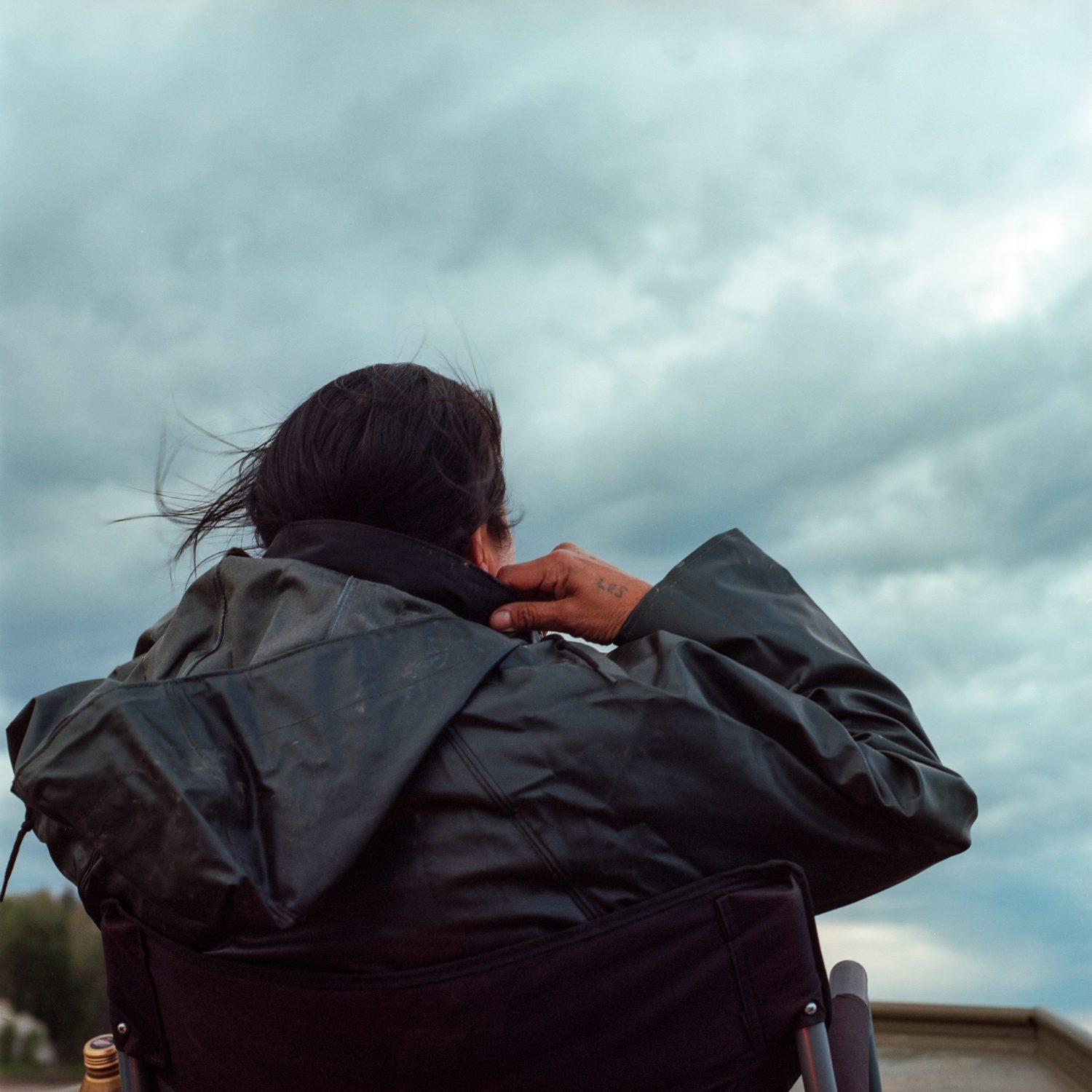
Yvonne L’Hommecourt, who works as a heavy-haul truck driver for Suncor, boats up the Athabasca river in 2012 while returning to Fort McKay after spending a weekend at her cabin on Poplar Point reserve, between Fort McKay and Fort Chipewyan. Poplar Point is now mostly used for recreation and some trapping. L’Hommecourt spent her summers there as a child and it is where her father is buried. Photo: Aaron Vincent Elkaim / The Narwhal
The future of Moose Lake is important, not only to Fort McKay, but also as a potential warning to First Nations around the country who seek to work productively with resource development while also maintaining traditional lands and ways of life.
Fort McKay has often had a voice at the table — something many First Nations struggle to obtain.
But when push comes to shove, will that voice be heard?
